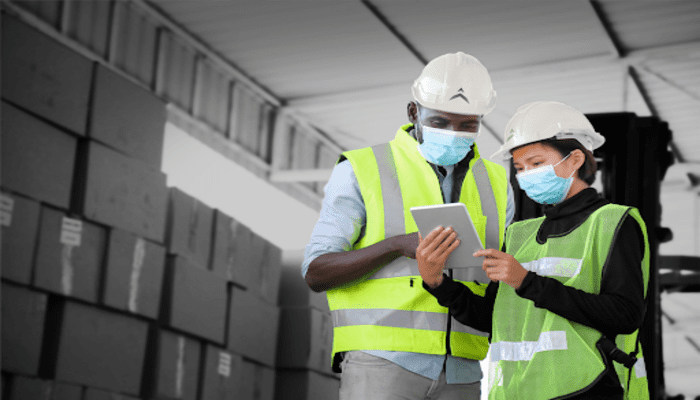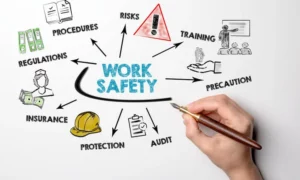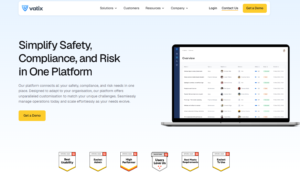To ensure workers’ safety it’s important to be aware of what hazards they are encountering and what they are doing at the moment. In industries like construction and manufacturing, mitigating risks has become a huge concern which is increasing workplace accidents and injuries.
One valuable solution is to introduce workplace safety training through OSHA 30 construction classes. Employees may get aware of all the possible hazards but how can companies ensure that their workers are safe? Smart devices for safety monitoring are a solution one needs to go for. So, let’s dig in more to find out how valuable this technology is for both employees and companies.
Wearable Technology For Safety Of Employees
Wearable technology is revolutionising, making it easier to monitor employees and ensure their well-being. Through real-time safety monitoring, it’s possible to prevent injuries, save employees from encountering hazards to maintaining smooth production. PwC predicted that in 2020, more than 75 million wearables would be in every workplace.
According to statistics, on average 38812 injuries are reported everyday which can be easily prevented through wearable safety devices and data analytics.Taking a closer look at the increasing number of accidents which crossed 340 million in past years including 160 million victims of work and related illnesses, the International Labor Organization takes initiatives to ensure injury prevention through wearable devices.
A number of companies surfaced with their innovative technology to promote the use of wearable devices. GuardHat is one reliable solution that is integrated with proprietary software ensuring the safety of workers. It’s equipped with sensors to monitor the working environment. Similarly, Kinetic is yet another great innovation that monitors the workforce health and location of the field. It’s a wearable device that prevents little injury and offers actionable advice to reduce the risks.
Preventing Workplace Injuries: What Is Smart PPE?
Personal protective equipment (PPE) and wearable safety devices are not new phenomena. It’s been practiced everywhere in the world. The integration of smart devices into workers’ personal protection equipment ensures to maintain of on-the-job safety. The smart tech ensures building greater connectivity giving real-time insights that help in saving lives and maintaining performance.
Enhanced Personal Protection Equipment
For safety purposes, workers wear Smart PPE, which has internet connectivity and is connected to other devices like tablets or desktops. The technology can be integrated into helmets, eye protection, or other workwear and shows live streaming. It acts as a shield to save workers from hazards.
How Smart Devices Can Help Prevent Injuries and Accidents
Wearable devices revolutionize workplace safety in so many different ways. Here are some examples that rightly describe how you can maintain a safe environment for the protection of employees.
Real-time monitoring:
Wearable devices can monitor employees’ physical activity, heart rate, and other biometric data in real-time. The analytics can help identify potentially dangerous situations, such as employees working too hard or too long without a break, and help prevent accidents and injuries. For instance, if the device detects that the employee is working too hard or has been inactive for too long, it can alert the employee to take a break or adjust their work activity.
Hazard detection:
Some wearable devices are equipped with sensors that can detect environmental hazards such as toxic fumes or radiation. This information can be used to alert workers to potential dangers and prevent accidents. A gas detector worn on a worker’s belt can alert them if there are dangerous levels of gas in the area.
Fall detection:
Wearable devices can detect falls and alert emergency services or coworkers in case of an accident. This can help prevent serious injuries and save lives. For example, a smart helmet equipped with sensors can detect if a worker falls from a height and automatically send an alert to the appropriate personnel.
Training and education:
Wearable devices can provide training and education to employees on workplace safety procedures. This can help prevent accidents and injuries by ensuring that employees are knowledgeable and prepared. For example, a virtual reality headset can simulate hazardous situations and provide workers with hands-on training in a safe environment.
Ergonomic feedback:
Wearable devices can provide feedback on employees’ posture and body mechanics. This can help prevent musculoskeletal injuries by ensuring that employees are using proper techniques and reducing strain on their bodies. For example, a posture monitor worn on a worker’s back can alert them if they are slouching or hunching over, helping to prevent musculoskeletal injuries.
Personal Protective Equipment (PPE) compliance:
Wearable devices can monitor employees’ use of PPE, such as hard hats or safety goggles. This can help prevent injuries by ensuring that employees are properly protected. For example, smart glasses can detect if an employee is not wearing their safety goggles and remind them to put them on before continuing work.
The Future Of Wearable Safety Technology
One can not deny the wearable safety technology benefits it provides to both employees and companies. It includes improved safety, reduced accidents and injuries, increased productivity, enhanced situational awareness, cost effective and improved training and education.
Considering all these benefits, in the long-run, wearable technology is expected to progress at a faster rate. These Wearable safety devices and data analytics integrated with cutting-edge technology will not make the industries safer but more productive.
According to the study conducted by Human Cloud at Work, organizations that have integrated wearable technologies have witnessed an 8.5% increase in employee productivity.
Hence, it highlights the fact that there is no doubt how wearables are pacing up and bringing a huge change in industries. These wearables have revolutionized the classic time-motion studies to measure the efficiency and productivity of a job in terms of the amount of labor input. Not only this, you can gather data analytics and insights that were previously not possible to gather.
Wrap Up
Wearable technology is now making its way into almost every industry. The wearable safety technology implementation having certain standards for every employee should be monitored and managed properly. There should be experts who assist the new workers when exposing them to critical worksites.



































